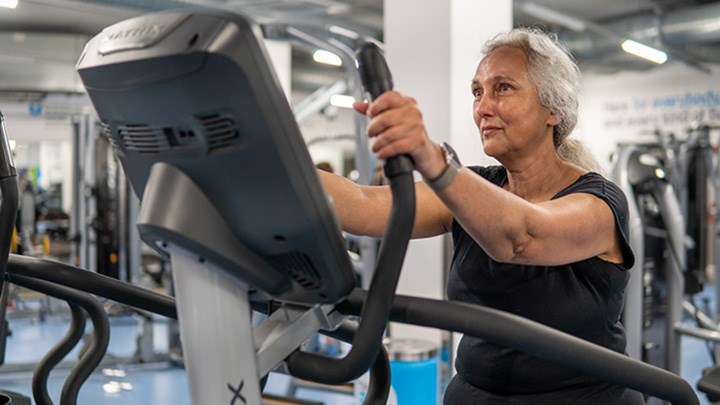Increasing daily exercise by ten minutes can reduce the risk of sarcopenia in older adults

A daily dose of low-intensity exercise reduces the risk of sarcopenia in older adults. And increasing one’s physical activity with even just ten minutes can lead to positive effects.
“This is good news for older adults who can’t do more intense exercise,” says Jort Veen who recently defended his doctoral thesis in sport science at Örebro University.
Jort Veen has recently defended his PhD at the research school Newbreed at Örebro University. Newbreed is part of the university’s strategic initiative Successful ageing.
Doctoral thesis: Physical activity, muscle mass and physical function in older adults
Loss of muscle mass, muscle strength and physical function is a natural part of ageing. The condition is called sarcopenia and often leads to lower quality of life, increased risk of falling and lower metabolism.
In his doctoral thesis, Jort Veen has studied the link between light-intensity physical activity – such as slow walks and light gardening – and the loss of muscle mass in older adults. In the statistical model used in the study, 235 older adults aged between 65 to 70 replaced 10 minutes of sedentary activities every day for low-intensity physical activity.
“Light-intensity exercise is enough to significantly reduce the risk for older adults to develop sarcopenia. The risk decreases further in the model where sedentary time is replaced by 10 minutes of daily moderate- to high-intensity physical activity,” says Jort Veen.
Muscle-strengthening activities reduce the risk of developing sarcopenia

In his research, Jort Veen has also studied how muscle strengthening activities – like strength training and yoga – affect muscle mass, muscle strength, physical performance and sarcopenia risk. The older adults participating in this study were already engaging in moderate- to high-intensity aerobic type physical activity at least 2.5 hours per week. Moderate-intensity exercise includes physical activity that raises your heart rate and breathing. For exercise to count as high-intensity physical activity it must lead to a considerable increase of heart rate and breathing.
The results show that adding muscle-strengthening activities at least twice a week can be linked to larger muscle mass and a lower risk of developing sarcopenia. It also improves the overall physical performance in older adults.
“Our studies support the WHO recommendation to engage in muscle-strengthening activities at least twice a week. Strength training such as working out with weights, resistance bands and body weight or doing yoga exercises have a positive impact on both muscle strength and muscle mass. But at least two muscle-strengthening workouts per week are required to prevent muscle loss,” says Jort Veen.
Exercise in middle age important
Jort Veen’s doctoral thesis also shows that exercising regularly during late middle-age, that is between 50 and 65, pays off. It leads to larger muscle mass and a higher level of aerobic fitness later on in life.
“This is particularly important for maintaining muscle mass as you get older,” he says.
Five hours of more intense physical activity per week desirable
According to WHO recommendations for physical activity, older adults should engage in at least 2.5 hours of physical activity per week, and it should be of moderate to high intensity. One of Jort Veen’s conclusions in his doctoral thesis is that physical performance levels among older adults that are physically active for at least 5 hours a week are higher than among their peers who engage in physical activity between 2.5 and 5 hours a week.
“Older adults who can be physically active for at least double the amount of time recommended as a minimum can improve their physical health. So, if you can exercise for more than 5 hours a week, then you should.”
Text: Jasenka Dobric
Translation: Charlotta Hambre-Knight
Photo: Unsplash and Örebro University
